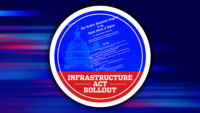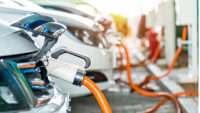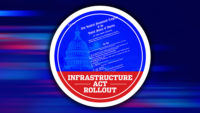Federal officials have approved funding plans from 35 states, the District of Columbia and Puerto Rico to deploy electric-vehicle charging stations along their highways, clearing a path for them to tap more than $900 million in federal formula funds to help build their part of what the Biden administration envisions as a nationwide network of about 500,000 chargers along 53,000 miles of roads.
In a Sept. 14 progress report, the U.S. Transportation and Energy Depts. said the Infrastructure Investment and Jobs Act provides $8 billion over five years for the EV charger network, which includes the $900 million in formula funds from fiscal years 2022 and 2023.
"The approval of the plans is really what triggers states' ability to begin to obligate funding through the program," Susan Howard, American Association of State Highway and Transportation Officials director of policy and government relations, said in an interview.
She said all of the states had submitted their plans by the Aug. 1 filing deadline. DOT and DOE are approving plans on a rolling basis. Among states awaiting approval as of Sept. 14 were Illinois, New York and Texas.
In February, DOT's Federal Highway Administration gave states an idea of how much funding they can expect, releasing state-by-state allocations for an initial $615 million in EV fiscal 2022 formula funds.
Eligible Uses
DOT and DOE—which have set up a joint office to oversee the EV program—said funds can be used for constructing new charging stations or upgrading existing ones, and electrical service equipment on-site installation, operation and maintenance.
After plans are approved, states also can seek reimbursements for costs they have already incurred for EV-related expenses, such as staffing.
DOE Secretary Jennifer Granholm said in a statement that the states with approved plans “now have the green light to build their pieces of the national charging network to ensure drivers can spend less on transportation costs while commuting confidently by charging along the way.”
Looking ahead, Stephanie Pollack, acting highway agency administrator, said that “we are reviewing the remaining plans and on track to finish the process by our target date of Sept. 30, if not sooner.”
AASHTO's Howard said that the states' plans "were really focused on the 'where' " of the plan—the locations of the stations."
The goal is to have a station every 50 miles and no more than one mile from designated Alternative Fuel Corridor routes. Such routes can accommodate vehicles powered by hydrogen, propane, natural gas—and electricity.
"States were able in their plans to ... articulate ares where they thought they would have challenges meeting that requirement in terms of the spacing," Howard said, adding that some states outlined areas where they felt they needed "flexibility or exemptions" regarding the intervals between chargers.
A key upcoming milestone will be a federal highway agency regulation setting minimum standards to implement the EV program, including the chargers, she said. The departments issued a proposed version of the rule in June and are reviewing public comments that have been submitted.
Howard said most states will probably want to see the final version of the rule and its requirements before they enter into agreements with outside companies to build and operate the stations.





